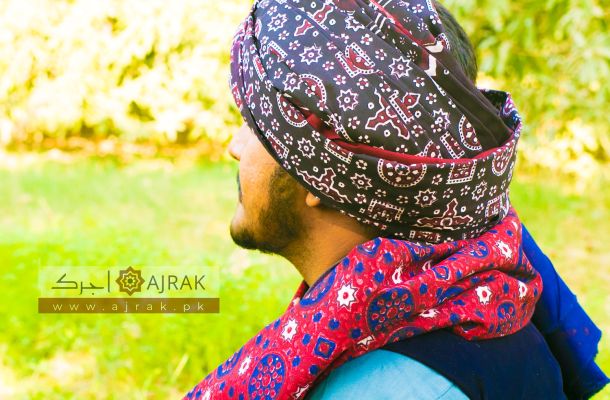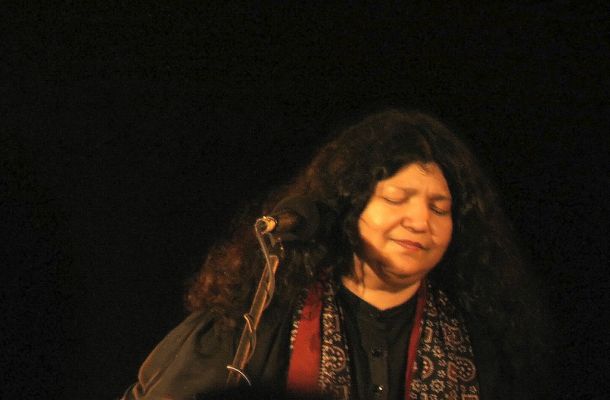Ajrak is a traditional form of block-printed fabric that is highly sought after in Sindh and Pakistan. It is known for its intricate designs and vibrant colors, and is often used to make clothing, bedding, and other items. Ajrak is also known for its high price tag, which can be attributed to the labor-intensive process of creating the fabric. In this article, we will explore why Ajrak is so expensive and the factors that contribute to its high cost.
Analyzing the Role of Ajrak in Traditional Dress and Fashion
Ajrak is a traditional form of art that has been passed down through generations in the Sindh region of Pakistan. It is a type of block-printed fabric that is used to make clothing, accessories, and home décor. The vibrant colors and intricate patterns of Ajrak have been a source of inspiration for fashion designers and have become a symbol of cultural identity in the region.
Ajrak has been a part of traditional dress for centuries. The vibrant colors and intricate patterns of Ajrak have been used to create beautiful garments for both men and women. The traditional dress of the region includes a long shirt, a shawl, and a turban for men, and a long shirt and a dupatta for women. The Ajrak fabric is used to make the shawl and dupatta, and the vibrant colors and intricate patterns add a touch of elegance to the traditional dress.
In recent years, Ajrak has become a popular trend in fashion. Designers have used the vibrant colors and intricate patterns of Ajrak to create modern garments that are both stylish and comfortable. From dresses to jackets, Ajrak has been used to create a variety of fashionable pieces. The vibrant colors and intricate patterns of Ajrak have also been used to create accessories such as bags, scarves, and jewelry.
Ajrak is more than just a fashion trend; it is a symbol of cultural identity. The vibrant colors and intricate patterns of Ajrak represent the rich culture and heritage of the Sindh region. It is a reminder of the traditional values and customs that have been passed down through generations.
Ajrak is a timeless form of art that has been used to create beautiful garments and accessories for centuries. It is a symbol of cultural identity and a reminder of the traditional values and customs of the Sindh region. Ajrak is a source of inspiration for fashion designers and a trend that will continue to be popular for years to come.
Understanding the Impact of Ajrak on the Local Economy
The ajrak, a traditional block-printed fabric of Sindh, is more than just a piece of cloth. It is a symbol of the culture and heritage of the region, and its impact on the local economy is undeniable.
The ajrak is a vibrant and intricate piece of art, with its bold geometric patterns and bright colors. It is a symbol of the region’s rich history and culture, and it is deeply embedded in the local identity. The ajrak is used to make clothing, bedding, and other items, and it is often gifted to mark special occasions.
The ajrak is also an important source of income for many people in the region. The fabric is produced by skilled artisans who use traditional methods to create the intricate patterns. The fabric is then sold to local markets, where it is used to make clothing, bedding, and other items. The sale of ajrak provides a steady source of income for many families in the region.
The ajrak is also an important part of the local economy. The fabric is often used to decorate homes and businesses, and it is a popular souvenir for tourists. The sale of ajrak helps to support the local economy, and it helps to preserve the traditional culture of the region.
The ajrak is more than just a piece of fabric. It is a symbol of the culture and heritage of the region, and its impact on the local economy is undeniable. The vibrant colors and intricate patterns of the ajrak evoke a sense of nostalgia, reminding us of the rich history and culture of the region. The sale of ajrak helps to support the local economy, and it helps to preserve the traditional culture of the region. The ajrak is a reminder of the beauty and resilience of the people of Sindh, and it will continue to be an important part of the local economy for many years to come.
Investigating the Factors that Make Ajrak So Expensive
The vibrant colors of Ajrak, the intricate patterns, the soft fabric – these are the things that make Ajrak so special. It’s no wonder that this traditional textile is so expensive. But what exactly makes Ajrak so costly?
Ajrak is a traditional form of block printing that originated in the Sindh region of Pakistan. It is made from natural dyes and hand-carved wooden blocks, and the process of creating it is incredibly labor-intensive. The fabric is usually made from cotton or silk, and the intricate patterns are created by pressing the blocks onto the fabric. This process can take days or even weeks to complete, and the fabric must be dyed multiple times to achieve the desired colors.
The cost of Ajrak is also affected by the scarcity of the materials used to make it. The natural dyes used to color the fabric are often hard to come by, and the wooden blocks used to create the patterns are often handmade and can be difficult to find.
Finally, the cost of Ajrak is also affected by its cultural significance. Ajrak is a symbol of pride and identity for the people of Sindh, and it is often used in traditional ceremonies and celebrations. This makes it a highly sought-after item, and the demand for it drives up the price.
Ajrak is a beautiful and unique textile, and its high cost reflects the time and effort that goes into creating it. It is a symbol of pride and identity for the people of Sindh, and its vibrant colors and intricate patterns make it a truly special item.
Examining the Complex Process of Crafting Ajrak
The ajrak is a traditional form of block-printed fabric that has been crafted in the Sindh region of Pakistan for centuries. It is a symbol of the region’s culture and heritage, and is often used to make clothing, turbans, and other items. The process of crafting ajrak is complex and requires a great deal of skill and patience.
The first step in the process is to prepare the fabric. The fabric is usually made from cotton or silk, and is dyed in a deep blue or black color. The fabric is then cut into the desired shape and size.
Next, the fabric is laid out on a flat surface and the design is drawn onto it. The design is usually a geometric pattern, and is often inspired by nature. The pattern is then transferred onto a block of wood, which is used to stamp the design onto the fabric.
Once the design is stamped onto the fabric, it is ready to be dyed. The fabric is soaked in a dye bath made from natural ingredients such as indigo, henna, and pomegranate. The fabric is then dried in the sun and the colors are set.
The final step in the process is to finish the fabric. This involves washing the fabric and then ironing it to give it a smooth finish. The fabric is then ready to be used to make clothing, turbans, and other items.
The process of crafting ajrak is a labor of love. It requires skill, patience, and an eye for detail. The end result is a beautiful piece of fabric that is a symbol of the region’s culture and heritage.
Exploring the History and Cultural Significance of Ajrak




